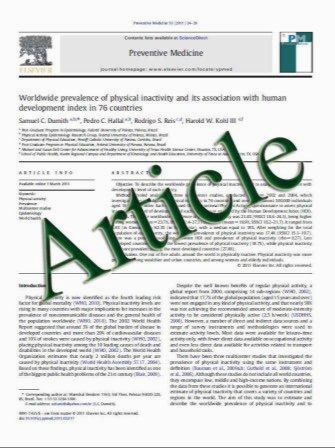Hirschsprung’s disease: what about mortality?
- نوع فایل : کتاب
- زبان : انگلیسی
- مؤلف : Alessio Pini Prato • Valentina Rossi • Stefano Avanzini • Girolamo Mattioli • Nicola Disma • Vincenzo Jasonni
- چاپ و سال / کشور: 2011
Description
Purpose Although significantly decreased during last decades, mortality rate for Hirschsprung’s disease still ranges between 1 and 10%. The authors reviewed the main features of patients with Hirschsprung’s disease treated in our Institution who died in the period between 1993 and 2010 in order to detect possible risk factors or prevention strategies. Methods The notes of all patients with Hirschsprung’s disease admitted to our Institution between January 1993 and January 2010 were reviewed. All families were interviewed and possible unknown deaths were recorded. We reported demographic data, length of aganglionosis, type and number of associated anomalies, age and type of onset, age and cause of death, chronological relationship between death and pull-through, and all other significant details. Results Eight out of a series of 313 patients with Hirschsprung’s disease died during the study period (mortality rate = 2.56%). Six patients were male for a male to female ratio of 3:1. Eleven associated anomalies were detected in five patients, including four congenital anomalies of the kidney and urinary tract, four heart, two central nervous system, and one skeletal malformations. One patient had Down Syndrome and one Cat Eye Syndrome. Two patients were born preterm. All patients had neonatal onset with delayed meconium passage. Five patients had aganglionosis confined to rectosigmoid colon (classic forms), two had total colonic aganglionosis and one had total intestinal aganglionosis. Enterostomy was performed in five patients. Median age at death was 75 days (range 30 days–8 years). The cause of death was enterocolitis in four patients, heart failure in three, and intestinal failure in one. Six patients died before the pull-through. Two patients died postoperatively. All patients but two died at home. Conclusions Onset and clinical features do correlate with severity. Newborns and infants seem to be more likely to develop serious life-threatening complications, particularly in case of associated cardiovascular malformations. Although enterostomies do not have protective effects over cardiovascular issues, prophylactic stoma should be considered in high-risk patients. Radical treatment (pull-through) should be performed as soon as possible. Alternatively, protected and cautious discharge of newborns with associated heart anomalies is strongly recommended in order to prevent serious and uncontrolled complications, regardless of the presence of a protective enterostomy. Postoperatively, close follow-up appointments are recommended. Families should be acknowledged and educated for prompt recognition and treatment of severe life-threatening complications.
Pediatr Surg Int (2011) 27:473–478 DOI 10.1007/s00383-010-2848-2 Published online: 21 January 2011


